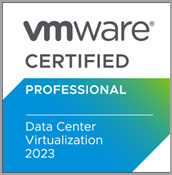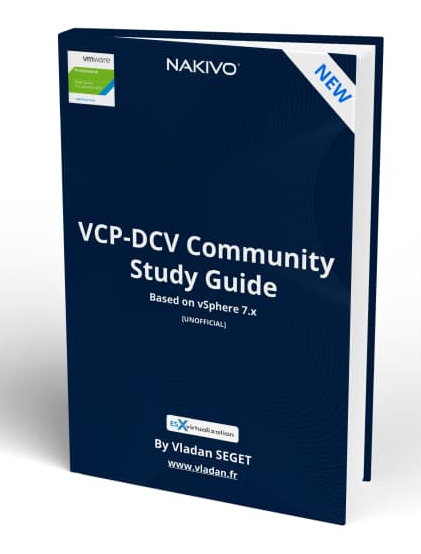VCP7-DCV Study Guide – VCP-DCV 2023 Certification
 The latest VMware certification has been announced. VMware just released a new certification which it's focusing on the installation, configuration, and management of VMware vSphere 7. You can become certified with a label of VCP-DCV 2023 certified.
The latest VMware certification has been announced. VMware just released a new certification which it's focusing on the installation, configuration, and management of VMware vSphere 7. You can become certified with a label of VCP-DCV 2023 certified.
Update: The exam based on vSphere 7.x will be retired the 31. Jan 2024
Get the latest VCP-DCV 2023 overview PDF from VMware Education.
This page is a page where you'll find all the necessary information about How to pass the VCP-DCV Exam based on vSphere 7.
This page will host a VCP7 Study guide which will be released as a FREE PDF.
Download FREE Study VCP7-DCV Guide at Nakivo.
- The exam duration is 130 minutes
- The number of questions is 70
- The passing Score is 300
- Price = $250.00
**************************************************
Sections included in The VCP Professional VMware vSphere 7.x Exam (2V0-21.20)
FAQ:
Data Center Virtualization solutions are frequently updated. Having a year as its certification version allows VMware to better maintain the exam and training content, and more importantly, provides certification candidates to communicate how current their skills are in relation to other certifications.
If you have taken one of the qualifying V7 courses and passed the older 2V0-621 or 2V0-622 exam you will be required to pass the latest Professional VMware vSphere 7.x (2V0-21.20) exam to earn the VCP-DCV 2023 certification you are pursuing.
Check the official VMware VCP-DCV 2023 exam guide (blueprint) here.

